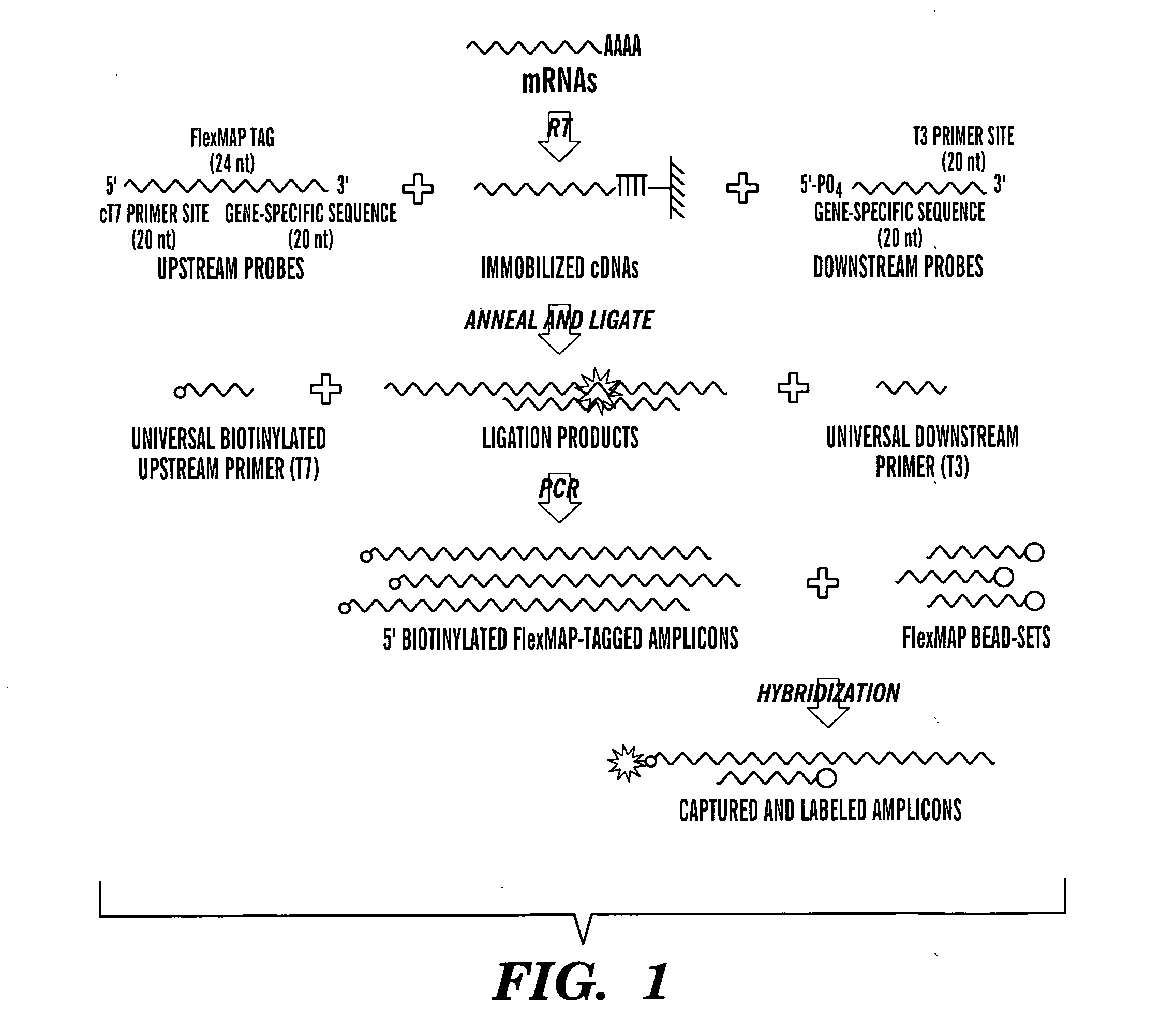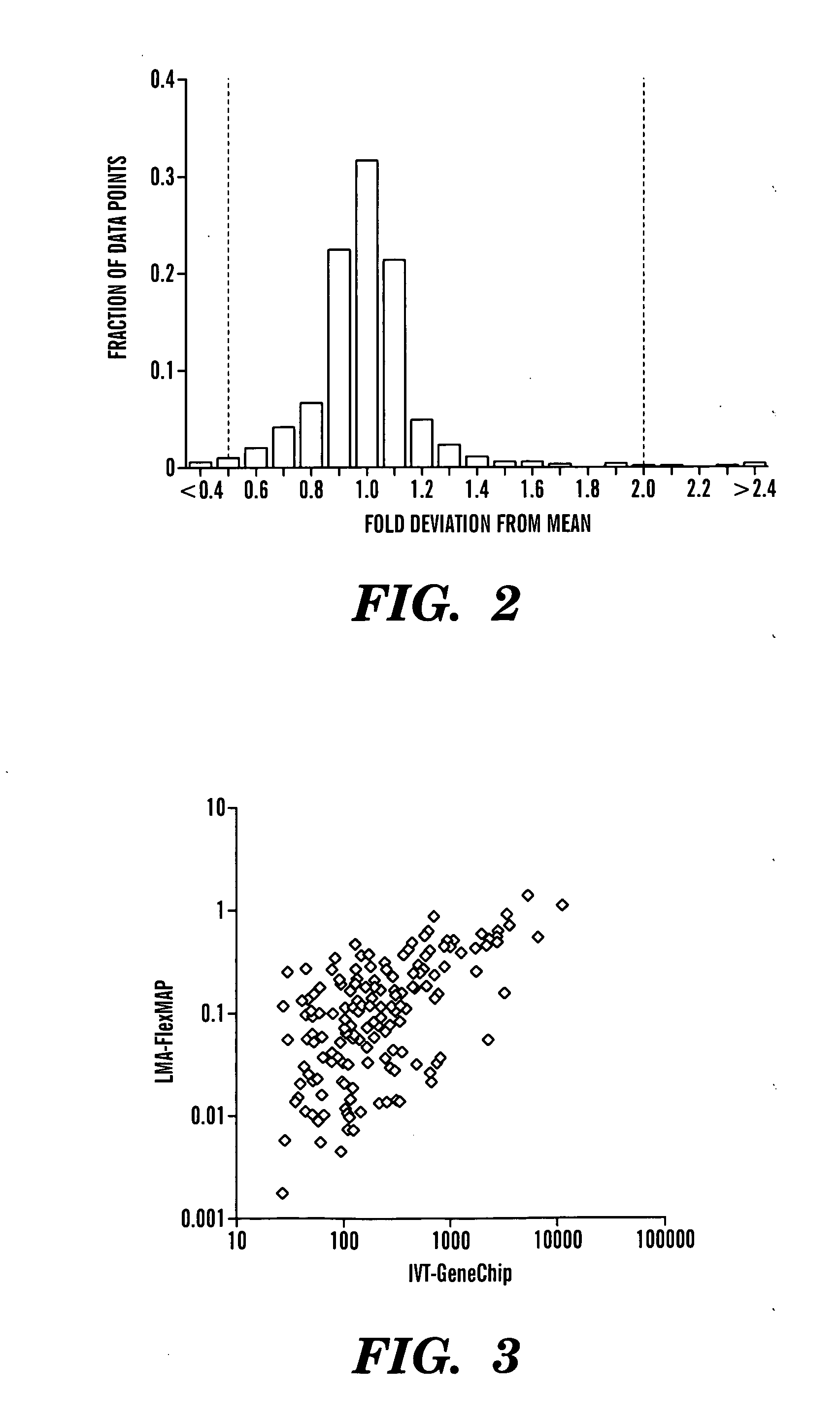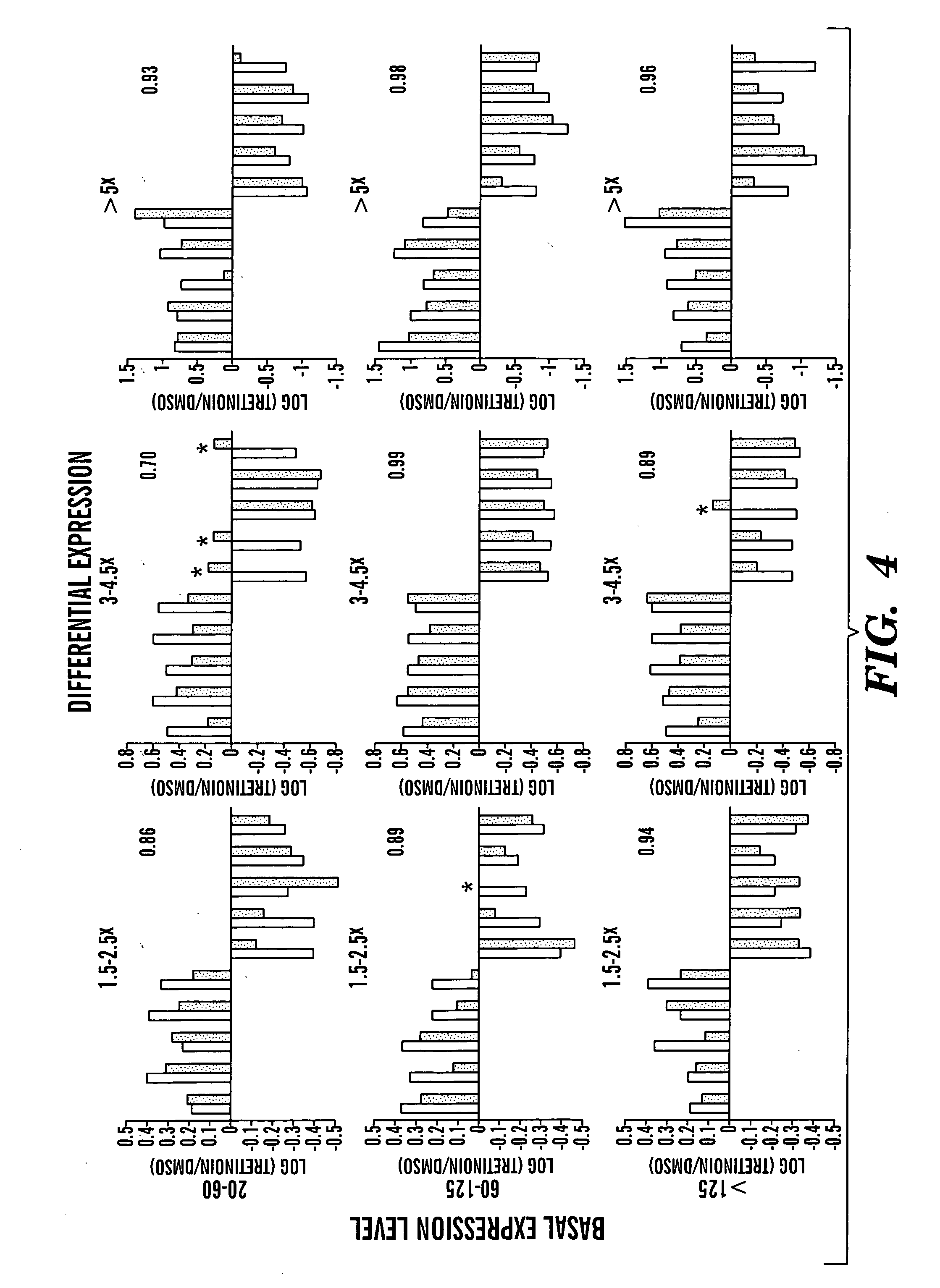Solution-based methods for RNA expression profiling
a technology of expression profiling and solution-based methods, applied in the field of solution-based methods for rna expression profiling, can solve the problems of insufficient sensitiveness of techniques, high cost, and high difficulty in determining the expression profiles of micrornas, and achieves low cost, high throughput, and flexibility.
- Summary
- Abstract
- Description
- Claims
- Application Information
AI Technical Summary
Benefits of technology
Problems solved by technology
Method used
Image
Examples
example 1
A Bead-Based Gene Expression Signature Analysis Method
Materials and Methods
Cell Culture and RNA Isolation:
[0154] HL60 (human promyelocytic leukemia) cells were cultured in RPMI supplemented with 10% fetal bovine serum and antibiotics. Cells were treated with 1 μM tretinoin (all-trans-retinoic acid; Sigma-Aldrich) in dimethylsulfoxide (DMSO; final concentration 0.1%) or DMSO alone for five days. Total RNA was isolated from bulk cultures with TRIzol Reagent (Invitrogen) in accordance with the manufacturer's directions. Cells cultured in microtiter plates were treated with 200 nM tretinoin or DMSO for two days and prepared for mRNA capture by the addition of Lysis Buffer (RNAture).
Microarrays:
[0155] Total RNA was amplified and labeled using a modified Eberwine method, the resulting cRNA hybridized to Affymetrix GeneChip HG-U133A oligonucleotide microarrays, and the arrays scanned in accordance with the manufacturer's directions. Intensity values were scaled such that the overal...
example 2
A Bead-Based microRNA-Expression Profiling Method
Materials and Methods
Samples
[0172] Details of sample information are available in Table 9. Total RNAs were prepared from tissues or cell lines using TRIzol (Invitrogen, Carlsbad, Calif.), as described (Ramaswamy et al., 2001), and in compliance with IRB protocols. Leukemia bone marrow mononuclear cells were collected from patients treated at St. Jude Children's Research Hospital and at Dana-Farber Cancer Institute and their immunophenotype and genotype determined as previously described (Ferrando et al., 2002; Yeoh et al., 2002). Normal mouse lung and mouse lung cancer samples were collected from KRasLA1 mice, and genotyped as described (Johnson et al., 2001). Lungs from four- to five-month old mice were inflated with phosphate-buffered saline prior to removal. Individual lung tumors and normal lungs were dissected and immediately frozen on dry ice before RNA preparation. HL-60 cells were plated at 1.5×105 cell / ml and induced to ...
example 3
MicroRNA Expression Profiles Classify Human Cancers
[0189] Additional information about the paper and a frequently-asked-questions (FAQ) page are available at http: / / www.broad.mit.edu / cancer / pub / miGCM.
Materials and Methods
Cell Culture
[0190] HEL, TF-1, PC-3, MCF-7, HL-60, SKMEL-5, 293 and K562 cells were obtained from the American Type Culture Collection (ATCC, Manassas, Va.), and cultured according to ATCC instructions. All T-cell ALL cell lines were cultured in RPMI medium supplemented with 10% fetal bovine serum. CCRF-CEM and LOUCY cells were obtained from ATCC. ALL-SIL, HPB-ALL, PEER, TALL1, P12-ICHIKAWA cells were obtained from the German Collection of Microorganisms and Cell Cultures (DSMZ, Braunschweig, Genmany). SUPT11 cells were a kind gift of Dr. Michael Cleary at Stanford University.
[0191] Umbilical cord blood was obtained under an IRB approved protocol from the Brigham and Women's Hospital. Light-density mononuclear cells were separated by Ficoll-Hypaque centrifugat...
PUM
| Property | Measurement | Unit |
|---|---|---|
| Volume | aaaaa | aaaaa |
| Fraction | aaaaa | aaaaa |
| Fraction | aaaaa | aaaaa |
Abstract
Description
Claims
Application Information
 Login to View More
Login to View More - R&D
- Intellectual Property
- Life Sciences
- Materials
- Tech Scout
- Unparalleled Data Quality
- Higher Quality Content
- 60% Fewer Hallucinations
Browse by: Latest US Patents, China's latest patents, Technical Efficacy Thesaurus, Application Domain, Technology Topic, Popular Technical Reports.
© 2025 PatSnap. All rights reserved.Legal|Privacy policy|Modern Slavery Act Transparency Statement|Sitemap|About US| Contact US: help@patsnap.com



